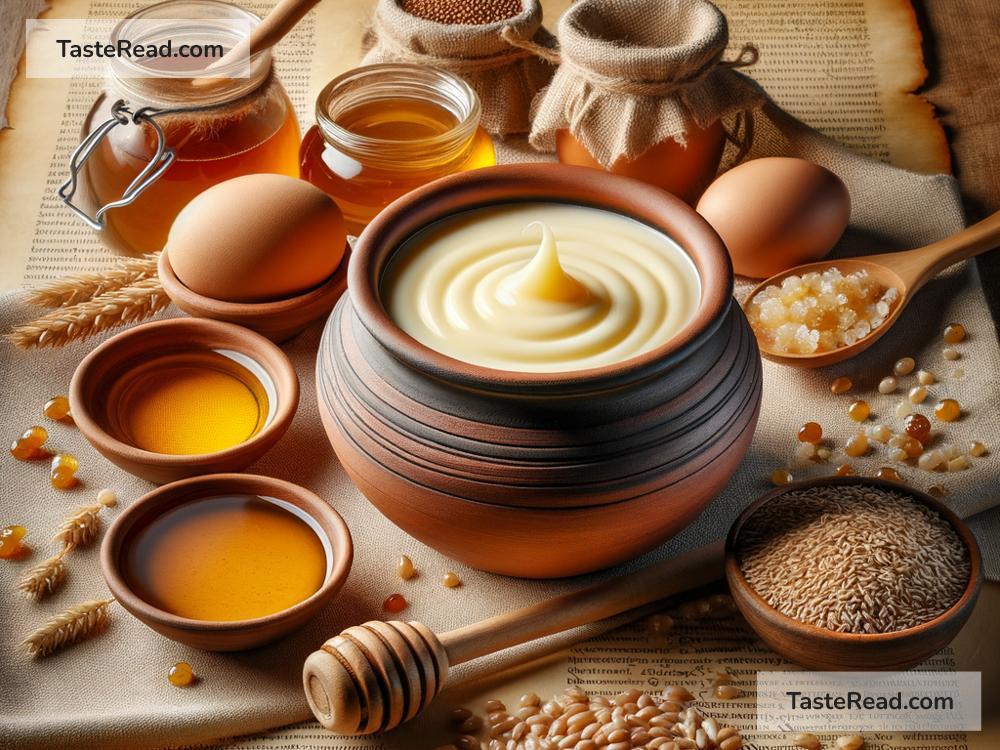The Origins of Custard: A Sweet Journey Through Ancient Tales
Custard is a creamy, sweet dish loved by people around the world. It’s made from basic ingredients like milk, cream, sugar, and eggs that come together to form a soft texture and rich taste. But where did custard come from? How did this delicious treat first appear in history? Let’s take a journey back in time to explore the fascinating origins of custard in ancient tales.
Custard’s Humble Beginnings
Custard, or something very similar to it, has been enjoyed by humans for centuries. Its simple ingredients—milk, eggs, and sweeteners—have been available for thousands of years, making it possible to create this tasty dessert long before modern cooking techniques were developed.
The first records of custard-like dishes can be traced back to ancient times, especially to the cuisines of the Roman Empire. Romans were skilled cooks, experimenting with various ingredients and creating recipes that often combined eggs, milk, and honey. These early Roman dishes were sometimes baked to form a thick, creamy texture, resembling modern custards.
The Romans didn’t call their dish “custard”—that term would come much later. Instead, they referred to their egg-and-milk creations as part of their overall culinary practice. One such dish was “patina,” a layered dish that used eggs as a binding agent. While patina wasn’t exactly custard, it shared some important characteristics, such as its use of eggs to thicken the mixture.
Ancient Tales Mentioning Egg-Based Delicacies
Aside from the Romans, other ancient cultures also cooked meals that resembled custard. In medieval Europe, as food traditions evolved, people started blending eggs and milk with spices. Some believe custard-like dishes had roots in magic and folklore associated with eggs, milk, and honey, which were considered symbols of fertility, purity, and sweetness.
In addition, ancient tales often included references to feasts and desserts. Some historians think that custard-like recipes were served during royalty banquets and village festivals. Perhaps it was seen as a luxurious treat because eggs and milk were considered valuable ingredients in many regions.
The Word “Custard” Takes Shape
So when did custard officially get its name? The word “custard” comes from the Old French word croustade, which referred to a kind of tart or pie with a crust. By the Middle Ages (around the 14th century), custard was commonly used as a filling for pies, incorporating eggs and milk to create a creamy center. Over time, the word “custard” started to be associated with the creamy mixture itself, not just the pie.
During the medieval period, custard recipes expanded and developed further. Cooks experimented with flavors by adding spices like nutmeg, cinnamon, and vanilla to improve the taste. Sweet and savory versions of custard were created, showing just how versatile it could be.
Custard in Royal Courts
Custard rose to popularity in the kitchens of European royalty. Kings, queens, and noble families enjoyed rich desserts, and custard was often on the menu at grand feasts. Pastry chefs would serve custard in baked tarts topped with fruit or nuts. Some even infused the custard with rosewater or other aromatic flavors to impress noble guests.
Custard also became a staple ingredient in elaborate European dishes, like flans and quiches. These dishes spread across cultures, influencing food traditions far beyond Europe. From its beginnings as a simple combination of eggs and milk, custard had grown into a sophisticated element of culinary art.
Custard Across the World
As trade routes expanded in the Middle Ages, custard recipes began to travel across continents. For example, as vanilla and sugar became widely available thanks to trade in the Americas, the dessert became sweeter and even more enjoyable. Custard took on new forms in different countries. In Asia, variations of custard included steamed egg dishes mixed with savory ingredients. In Latin America, custards evolved into desserts like flan, which remains highly popular today.
The global journey of custard shows how food can connect us across borders and generations. People everywhere found ways to adapt this classic recipe and make it their own.
Today’s Custard Legacy
Today, custard remains a beloved treat. It can be served hot or cold, baked or steamed, and enjoyed in pies, puddings, fillings, or even as a base for ice cream. From its first appearance in ancient kitchens to the creative recipes we enjoy today, the story of custard reminds us how simple ingredients can create something truly joyful.
Next time you eat custard or enjoy a custard-filled dessert, think about its long, rich history. Ancient cooks, medieval chefs, and generations of bakers all contributed to the wonderful treat we know today. Custard is more than food—it’s a sweet connection to our past.
So whether you’re savoring a creamy custard tart or spooning up silky flan, remember that you’re enjoying a dish with roots in ancient tales, royalty feasts, and cultures from around the world. Isn’t it amazing how food can tell such a delicious story?


